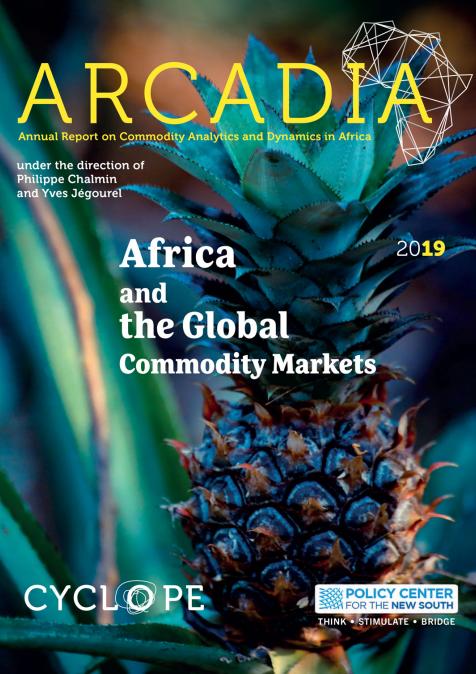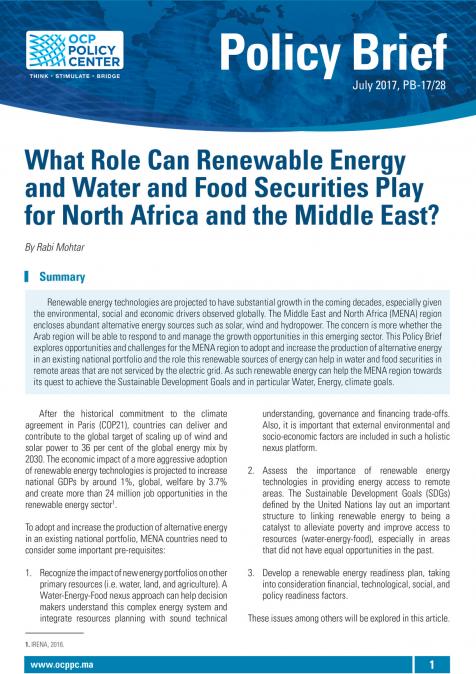Publications /
Opinion
Carbon trading have long been touted as a silver bullet to channelise climate finance to African countries lacking the capital to support climate mitigation and adaptation efforts. The erstwhile ‘Kyoto Protocol’ and its successor ‘The Paris Agreement’, though much more comprehensive and wider in scope, both recognize the importance of carbon trading (a form of carbon pricing) in combatting climate change, and in the Paris Agreement the same is enshrined under Article 6 and its sub-components (more on this later).
Carbon credits are generated from avoiding, reducing, or removing greenhouse gas emissions by either switching from fossil fuels to cleaner alternatives, adopting energy efficient technologies or conserving and increasing forests which are primary providers of carbon cycle ecosystem services. However, it must be noted, that apart from Article 6, carbon credits can be generated from domestic or closed jurisdiction carbon markets under national or regional compliance mechanisms such as the EU ETS and many other countries domestic carbon markets, as well as voluntary carbon markets where companies or countries can offset their emissions of their own accord by purchase of carbon credits arising for mitigation based economic activities.
Relevance of Carbon Markets to Africa
Africa, which has contributed least to historical emissions and continues to have the lowest per capita emissions globally (an annual average of 1 ton of CO2 compared to 10.3 ton in North America), faces a disproportionate burden from climate change. According to the World Bank, while China must raise its annual climate mitigation spending by 2% of GDP through 2030, Cameroon must do so by a staggering 9% of the GDP. Countries of the West African Sahel including Burkina Faso, Chad, Mali, Mauritania, and Niger, need to increase spending by about 8% of GDP on average to support mitigation efforts at home. Moreover, African governments, as in most emerging economies, are fiscally constrained, particularly in the wake of the COVID-19 crises. Their debt-to-GDP ratios are high, as high as 70% and 40% in South Africa and Nigeria respectively in 2021. This means a limited ability to borrow from the international markets. The situation is compounded by insufficient lending from multilateral banks, often accompanied by harsh conditionality.
The situation begs for innovative financial engineering and creative thinking that can help mobilize large-scale and low-cost climate finance for the region. Carbon markets with the right institutional guardrails and strategic planning can be catalytic in mobilizing this climate finance, from both international and domestic private and public sources - provided appropriate price of carbon is paid for by developed country buyers – private and government, which can be either defined host country requirements for investment in decarbonisation or buyer country carbon prices.
However, before declaring carbon markets as the potential panacea for climate finance woes, it’s important to assess the challenges to carbon markets, especially in the context of Africa.
First, there is skepticism about the carbon-saving potential of carbon credits, because of flawed carbon accounting methodologies or over-zealous middlemen and agents distorting the market by pushing ‘phantom’ credits for their own vested interests (this is for VCM usually). The credibility, integrity, and viability of carbon credits poses a serious concern. Second, there is only a small number of credit generating programs run by African local project developers. For instance, between 2016 and 2021, only 10% of carbon credits issued globally hailed from an African country, and these were listed by merely 15 firms. Third, most of the benefits from these projects often accrue to the traders, project developers, and bankers from outside Africa, rather than to local communities. Lastly, the issue of no double counting under Article 6 of the Paris Agreement is proving to be a significant hinderance to the equitable distribution of emission reduction efforts globally.
Navigating Challenges and Strengthening Engagement
Article 6 of the Paris Agreement outlines market and non-market mechanisms for countries to cooperate voluntarily in order to achieve their Nationally Determined Contributions (NDCs) and reduce greenhouse gas emissions. Article 6 has three important sub-components - Article 6.2 sets out guidelines for bilateral action covering internationally transferred mitigation outcomes (ITMOs). It permits countries to transfer their emission reductions from one country to another in order to meet the NDC requirements. Article 6.4 aims to create a new international carbon crediting mechanism which will allow countries to meet their NDCs via emission reduction generated by implementing programs and projects. It is a successor to the Kyoto Protocol’s Clean Development Mechanism (CDM) and is expected to be operational by 2025. Article 6.8 addresses non-market international cooperation, and may include social inclusivity, financial policies and measures, circular economy, blue carbon, just transition of the workforce, and adaptation benefit mechanisms. These new regulations encompass transactions between governments, and between governments and private-sector entities. Scenarios may include one country funding efficiency upgrades in another’s energy or transportation sectors, or acquiring carbon offsets from forests within that country.
Many African countries are keen to strengthen their engagement under the Article 6. Since 2020, over two dozen countries have entered into bilateral cooperation agreements under Article 6.2, starting with Peru and Switzerland in 2020. More recently, Ghana and Senegal have entered into partnerships with Singapore for cook-stove based credits. Singapore has also provided loan guarantees to Ghana for renewable power in return for 160,000 ITMOs by 2030 (for context, Singapore has legally mandated Klik Foundation, a carbon dioxide compensation association, to purchase ITMOs from countries Singapore has signed bilateral deals with, and then to provide them to Swiss companies to offset part of their emissions). Other examples include Japan, which entered into pilot contracts with Ethiopia and Kenya, while Gabon also recently signed one with South Korea.
Other Annex 1 (developed) countries, including major powers such as the United States and United Kingdom, must also engage in bilateral agreements with African nations to bolster climate action within the framework of the UN Framework Convention on Climate Change. Setting up advance-market commitments with countries and companies in Africa will help in streamlining policy processes and infrastructure for increased mitigation and adaptation projects on the continent. Conversely, African countries must also demonstrate their readiness and send policy signals to attract such investments. For instance, in 2022, Ghana collaborated with the UNDP to establish a framework for implementing Article 6, alongside the establishment of the Ghana Carbon Registry, aimed at documenting and authorizing carbon projects. Such efforts underscore the importance of strengthening regional cooperation on capacity building for carbon markets.
Now there are a plethora of capacity building programs that function in this regard, including the Eastern Africa Alliance on Carbon Markets and Climate Finance, which covers Burundi, Ethiopia, Kenya, Rwanda, Tanzania, Uganda, and Sudan, and provides support to these countries on achieving Article 6 readiness. Similarly, the West African Alliance on Carbon Markets and Climate Finance provides support to develop market capabilities across 16 countries of the region. Other capacity building programs exist including the World Bank’s Partnership For Market Implementation Facility, Japan’s Paris Agreement Article 6 Implementation Partnership (A6IP), and Germany’s Global Carbon Market. However, according to a report published by the Observer Research Foundation and the Environmental Défense Fund, these programs often work in silos with weak coordination, ineffective stakeholder engagement mechanisms, limited capacity sustainability, and insufficient engagement with the private sector. These factors have collectively undermined the effectiveness of these programs. Article 6.8, which recognizes non-market approaches to promote mitigation and adaptation, should be leveraged to help solidify some of these capacity-building endeavors. Emphasis should be placed on equipping and empowering African youth in these initiatives, fostering a cohort of African project developers, traders, financiers, and credit verifiers actively participating in the carbon market value chain.
Furthermore, host countries in Africa should be strategic in their sector selection for carbon markets, in order to avoid compromising their own Nationally Determined Contributions (NDCs). For example, Ghana aims to refrain from issuing ITMOs for initiatives like switching light bulbs or planting trees on smallholder plantations, as these are relatively cheaper for the country to manage itself. Instead, it seeks to issue ITMOs that generate substantial funds for projects in more challenging areas, such as renewable energy and cooking fuel. Moreover, voluntary carbon markets, which operate independently of NDCs (i.e. they do not impact NDCs since they are not regulated under the UNFCCC), can be viable alternatives to raise climate finance for NDC-covered projects if required. African entities should also seek opportunities to participate in significant compliance markets, such as the EU ETS, which collectively boast an annual value of approximately $800 billion, compared to just $2 billion for voluntary offset markets.
Carbon markets have immense potential for emission abatement and for mobilizing substantial climate finance for Africa, yet they also present major challenges. The key lies in crafting policies that can effectively harness such instruments, employing a combination of Article 6 compliance and voluntary carbon markets that align with the country’s long-term climate strategy. Carbon markets are poised to become indispensable economic instruments in the global fight against climate change, and Africa must enhance its engagement in this domain. Through active participation and leadership, Africa can position itself favorably to wield influence and significantly contribute to the development and evolution of global carbon markets.







